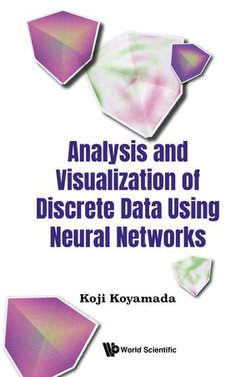This book serves as a comprehensive step-by-step guide on data analysis and statistical analysis. It covers fundamental operations in Excel, such as table components, formula bar, and ribbon, and introduces visualization techniques and PDE derivation using Excel. It also provides an overview of Google Colab, including code and text cells, and explores visualization and deep learning applications.
Key features of the book include topics like statistical analysis, regression analysis, optimization, correlation analysis, and neural networks. It adopts a practical approach by providing examples and step-by-step instructions for learners to apply the techniques to real-world problems.
The book also highlights the strengths and features of both Excel and Google Colab, allowing learners to leverage the capabilities of each platform. The clear explanations of concepts, visual aids, and code snippets aid comprehension help learners understand the principles of data analysis and statistical analysis. Overall, this book serves as a valuable resource for professionals, researchers, and students seeking to develop skills in data analysis, regression statistics, optimization, and advanced modeling techniques using Excel, Colab, and neural networks.
Contents:
Introduction:
- Basic Operations of Excel
- Basic Operations of Google Colab (Colab)
- Organization of This Document
Basic:
- Background
- Statistical Analysis in Excel
- Regression Analysis
- What-if Analysis
- Solver
- Colab
- NNs
Practical Part:
- About PINNs
- Automatic Differentiation in NN
- Using Automatic Differentiation in Regression Equation
- Automatic Differentiation Using Colab
- Increasing the Accuracy of Visualization of Magnetic Line Group Data Using Automatic Differentiation
- Generation of a CAD Model from Point Cloud Data Using Point Cloud Data Processing Software
Advanced Application Section:
- Derivation of PDEs Describing Physical Data
- Use of Visual Analysis Techniques
- Methods for Solving a Given PDE
Physically Based Surrogate Model:
- About the CAE Surrogate Model
- Application to Carbon Neutrality (CN)
Closing Remark
Readership: The book is primarily intended for readers in the fields of data analysis, statistics, and applied mathematics. The target readership includes professionals, researchers, and students in both academia and industry. Discipline/Profession: Data analysts, Statisticians, Mathematicians, Researchers in applied sciences and engineering, Graduate and Undergraduate students in data analysis, statistics, and applied mathematics.
Key Features:
- Comprehensive Coverage: The book offers a comprehensive coverage of Excel regression statistics, statistical analysis, What-if analysis, Solver, Colab, neural networks (NNs), and advanced applications. It encompasses a wide range of topics related to data analysis and modeling
- Practical Approach: The book emphasizes practical application by providing step-by-step instructions and examples. Readers can learn how to perform various statistical analyses, implement regression analysis, optimization, and neural networks using Excel and Google Colab
- Neural Network Implementation: Readers can understand how neural networks work without programming. Using the Excel macros in the appendix, readers can build a neural network with a given number of layers and number of neurons per layer on an Excel sheet and calculate the parameters using the Excel solver
- Integration of Automatic Differentiation: The book introduces the concept of automatic differentiation in neural networks and demonstrates its application in regression equations and visualization. This unique aspect enhances the accuracy and efficiency of data analysis
- PDE Derivation and Solutions: It explores the derivation of partial differential equations (PDEs) describing physical data and provides methods for solving them, including Fourier transform and physics-informed neural networks (PINNs). This coverage sets it apart from other books and caters to readers interested in advanced mathematical modeling
- Physically Based Surrogate Model: The book introduces the concept of a physically based surrogate model, particularly the CAE (Computer-Aided Engineering) surrogate model. It showcases its application in carbon neutrality and highlights the value of physics-based learning
- Hands-on Examples and Applications: Throughout the book, readers will find practical examples and application cases, enabling them to grasp the concepts effectively and apply them to real-world scenarios
- Competitive Advantage: The book stands out with its unique combination of Excel, Google Colab, and neural networks for data analysis and modeling. It provides a competitive advantage over other books by offering comprehensive coverage, practical techniques, and advanced applications
- Value-added Features: The inclusion of detailed explanations, visualizations, implementation techniques (including Excel macros and VBA), and application examples enriches the learning experience and helps readers develop practical skills



Share This eBook: